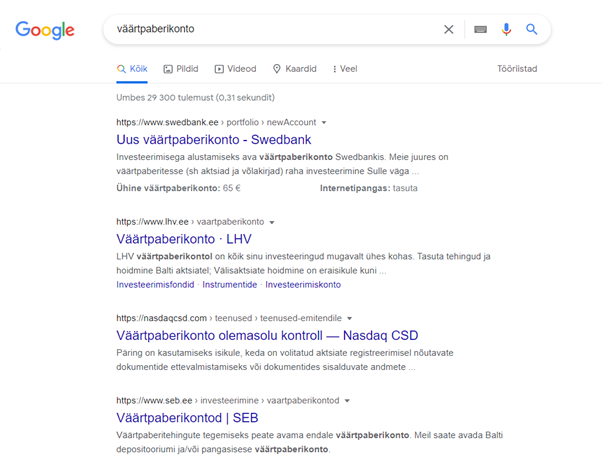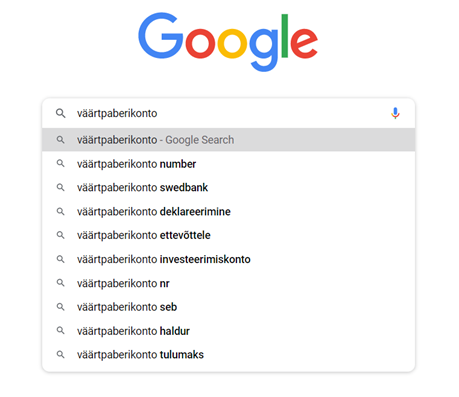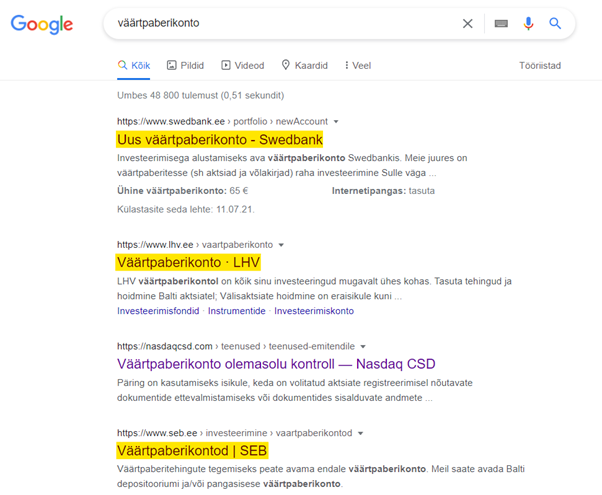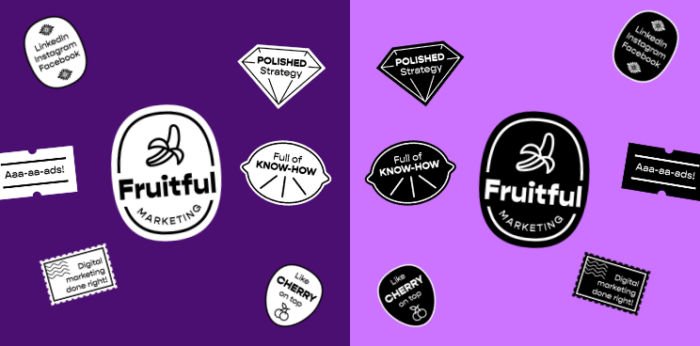Search Engine Optimization

In today’s blog post, we’ll take a closer look at:
- What is Search Engine Optimization really about?
- How actively do people use Google?
- Why is preliminary work necessary for successful SEO?
- What is the E-A-T model?
- What is SEO copywriting?
What is Search Engine Optimization?
SEO, or search engine optimization, is a part of digital marketing that aims to increase a website’s position in search engine results, increase web traffic, and thus earn higher sales revenue.
In general, search engine optimization is referred to as the Google search engine, as Google has 92.47% of the global search engine market.
Why SEO is so important?
If you think about the above definition, SEO is essential for your business.
The reason is simple – SEO allows companies to be visible to their customers just as they are searching for information on Google for a variety of reasons.
Deliberately performed SEO helps to direct people with different buying interests to complete the transaction at different stages of the sales tunnel.
Is it necessary to optimize my website?
If your goal is to use digital marketing and get in front of a customer that has an active need for your product, then optimizing your website for search engines is important in your marketing mix.
It is estimated that 63,000 searches are made globally every second through the Google search engine.
5.6 billion searches per day.
2 trillion searches a year. The average person Googles for information 3-4 times a day.
Monitor your behaviour as a consumer – if you have a question where will you go to get your question answered? I don’t think that you’ll reach for an encyclopedia. You’ll Google it instead.
People’s behaviour clearly shows that if you can’t be found on Google, you won’t exist.
Fun fact
People do 2 trillion searches in a year. An average person is Googling 3-4 times per day.

What activities affect your SEO efforts?
SEO results are affected by over 200 different criteria.
It’s impossible to optimize your site for all of your criteria because Google hasn’t published all of the criteria that affect search engine positions.
However, we do know the main trends that affect a website’s position in search engine results.
On-page SEO
High quality and unique content for your website play an important role in on-page SEO.
Content must be formatted with the correct titles and keywords.
On-page SEO includes technical SEO, which also takes into account the user-friendliness of the website.
On-page SEO includes technical SEO, which also takes into account the user-friendliness of the website.

Off-page SEO
The purpose of off-page SEO is to confirm the credibility of the information on your website.
It is generally associated with link building.
External links increase the authority of the website, which has a positive effect on the website’s position in search engines.
The more external links from quality websites, the more trustworthy your page will be in Google’s eyes.
Mention of a company without an active link in blog articles or social media will also be considered.
How to get started?
01Know your audience who you want to reach
Think of yourself as answering the following questions:
- Who do you want to reach? Age? Sex? Annual income? Geographical location?
- What websites do they visit?
- What content format do they prefer to consume?
- What are their needs?
- What needs are the current search results not meeting?
| Demographics | Websites and content | Needs |
| 24- to 35-year-old women with higher education (Estonia) who are interested in making stock transactions on the Tallinn Stock Exchange. | LHV forum, Finantsvabaduse Facebook group | They need a comprehensive blog article that details the opening of a securities account and is supplemented by a price calculator related to securities account fees. |
02Map the topics and keywords you want to stand out in the search engine
When mapping topics and keywords, think about the target groups outlined in the first point. What topics will attract the desired audience to your website?
Create a list of topics that interest your audience the most:
- New securities account
- Verification of the existence of a securities account
- Bank account opening and management
- Why do investors choose LHV Bank for Securities?
- A securities account is required for stock exchange transactions
- Great comparison: which bank offers the cheapest transaction costs
- How to start investing in Tallinn Stock Exchange?
- Securities account management fees
When searching for topics, we recommend using Google search as your primary source of information. The first results clearly show what topics competitors have already written about.

You can do this either manually or by using a tool that helps you analyze different topics on your competitors’ pages. I recommend using BuzzSumo, SEMrush, or SEranking.

Next, start with keyword analysis to find specific keywords that match the topics listed in the previous step.
I recommend following the Google Search Engine recommendations when creating your primary list.
This gives you a quick overview of the keywords that people are actually searching for.

Now prioritize your keywords according to your buying interest, search volume, competition, and relevance to your business.
| Keyword | Intention | Search Volume | Competition | Relevancy |
| Securities account | High | 320 | Low | Very relevant |
| Opening a securities account | High | 40 | Low | Very relevant |
| Declaration of a securities account | Low | 10 | Low | Not relevant |
| Securities account for the company | High | 10 | Low | So-so |
Finally, choose 1 keyword to optimize your page/blog post for.
03Plan content creation
Now is the time to plan the content you are going to create. As you can already guess, content planning is based on the topics and keywords you worked on in the previous phase.
Remember that your goal should be to display content on your website that will get people to share it.
Your goal is to outperform your competitors in terms of content quality.
How to measure if your content is good or not?
Good content is something that makes your ideal customer share their experience or new knowledge with others.
Be it the real emotion that your piece of writing creates in him or the knowledge he or she has just learned from your blog post.
Create value with your content for your customer
Create content that covers your keyword from start to finish
The aim is to provide the reader with as much information as possible and related to the search interest.
If you liked this article, please share it organically without asking you to.
Think about the fact that if a person searches for a keyword on a search engine, the content that comes up would be 100% satisfying to their needs.
It is important that the reader receives the necessary information from your blog post and does not have too many additional questions.
Excessive additional questions make you want to find out more about this topic.
If you are unable to provide it on your own website, it will look for additional information on competitors’ websites.
| Keyword | Content | Content description |
| Securities account | Article on the aspects related to the opening of a securities account + cost calculator | A comprehensive article on various aspects of a securities account that addresses the target audience. A cost calculator is included to help you calculate the cost of different service providers. Comments/suggestions of Estonian female investors added as comments. |
Go deep with one topic
A wide range of content materials covering the same topic is a good strategy to use.
This helps to create an expert opinion for ideal clients.
People will associate you and your website with the topic you are writing about.
A good example is our blog focused on digital marketing.
If our readers have a professional desire to set up Google Ads, they will first come to our blog, educate themselves on the subject, and then start developing a solution plan.
Keep in mind that you’re not creating content for just one keyword – bidding on one keyword won’t help you rank higher in search results, but rather inhibit it.
Going deep with one specific topic helps to create authority
Authority is also needed for Google.
Google considers two aspects when considering authority:
- high-quality backlinks;
- E-A-T model.
Anyone can say that he or she is an expert in a specific field
The E-A-T model helps to eliminate con-artists.
- Health;
- Security;
- Finance;
- News;
- Legislation;
- Public administration;
- Shopping;
- Other topics related to a person’s money or life (studies, nutrition, etc.)
All of these topics are closely linked to human well-being.
Google’s goal is to provide search results that don’t endanger people’s lives or turn them into the hands of scammers.
How Google ranks the authority of your page?
- Be specific in the “About Us” section or create a separate page to showcase who you are and how your journey started
- Create “Contact” page that is easily accessible to everyone
- Showcase references on your page
- Use backlinks that refer to used sources in your articles
- Add “Privacy policy” and “Terms of use” to your page
External links that point to your homepage also build trust in Google’s eyes.
Getting Google to accept or recommend authoritative websites in your field is a big plus for Google.
So when planning your content, you need to think about how to direct people to share your content on their own.
Fun fact
In addition to external links, text-based mentions help to increase your authority – even a Twitter post or news portal article mentioning your business name is enough.

04Create content
Now it’s time to start creating content based on the keyword you’ve selected.
Select the appropriate content format
Enter your keyword on Google and see the first search results.
Are they all “how-to” guides? Product ratings? Videos? Service pages?
The top pages clearly tell you what buying interest Google believes your ideal customers will reflect for that keyword.
To get first with this keyword, it’s a good idea to use the same format to create your content.
The example below shows that three out of 4 are service pages.
As a financial services company, you would like to optimize your securities account service page for the keyword ‘securities account’.

Write
Three ideas for writing content:
- Go to the details. Long content articles are referred to 77.2% more than short articles;
- Analyze the pages that came to Google for this keyword. In order to stand out from the competition, it is necessary to create content that is largely better than what is currently available to people;
- Look for trends that currently offer people talk. You can gather information about trends from the following sources:
- Ahrefs;
- SEranking;
- Google Trends;
- AnswerThePublic.
Update your existing content from time to time
It’s a good idea to update your existing content from time to time.
This helps to keep the article already created relevant, up-to-date and useful for the reader – even 4 years after the article was first published.
If you have invested so much time in creating content to make it the best article that is informative and useful to people, why waste that time and money in the long run?
Reuse previously created materials.
Google gives an easy advantage to updated content in the search engine.
05Optimize your content from the get-go
On-page SEO plays an important role in SEO activities.
Here are 3 aspects to focus on to bring your content to the search engine more:
- Add your keyword to the website URL, title tag, and title;
- Write a meta description that will get people interested in your blog article;
- Use keywords, synonyms, and related terms throughout the page.
Create content with readers in mind
Google search engine optimization is important, but your content is consumed by real people, not Google’s robots. Make sure people like it and find it valuable.
When writing keep in mind the basics of SEO copywriting
SEO copywriting is a way of writing text that is understood by both Google’s robots (higher position in the search engine) and the people who read it (higher readability percentage + shareability).
Writing only for Google will make your writing monotonous and difficult for people to read.
If you only write to readers, your articles may not come up with critical keywords that might be needed to get noticed in search results.
Good SEO copywriting helps you to:
- Create more backlinks to your website;
- Reduce website bounce rates;
- Increase the time spent on the website;
- Increase average clickthrough rate;
- Make content on social media more viral;
- Start a discussion about this topic in your community.
Read more about SEO copywriting from this Backlinko blog post.
Web content needs to load quickly and look good visually
An attractive and fast-paced website helps reduce bounce rates and increase article sharing.
Large photos dramatically slow down your website. To prevent your article from opening too slowly for the photos you’re using, we recommend using a web tool that “compresses” your photos into smaller files.
For the best overview of web page speed, we recommend using the Google PageSpeed Insight Tool.
This tool will give you a specific list of activities that will help you improve your website’s speed and thus create better opportunities to appear in the Google search engine.
Grammar
For texts in Estonian, ask colleagues to review their articles or the copywriter to edit the material.
Use Grammarly software to check the grammar of English texts.
The aim here is to create content that is easy to read and understand.
06Create a backlink strategy
Backlinks are important in SEO activities outside the website.
Backlinks help increase the domain authority of your website – the more quality backlinks from authoritative websites in your field to your website, the better.
To get backlinks, it is recommended to create a specific action plan.
Every time you create content for a website, think about how to get people to share your content:
- Is the content you create more informative than competing articles?
- What are these pieces of information that create a “wowzers” effect in people and the desire to share a piece of writing with colleagues or other professionals in the field?
- When writing an article, could you involve a Key Opinion Leader in your field to help share your content with your followers?
- Is there a company, website or blog for which your article is so important that they would be willing to link to it on their website?
We recommend starting with a backlink strategy already in the content planning phase.
07Goals and KPIs
Setting goals helps you create a clear path you want to take with your activities.
SEO is a long-term strategy.
Google’s results don’t change overnight, and competition for keywords is getting fiercer every day.
Therefore, it is critical to keep an eye on your results and activities.
Choose the goals and KPIs you like for your SEO activities.
These are the metrics you use to decide whether or not your SEO activities are working.
It is wise to set goals in the planning phase – this will help you avoid stupid mistakes when starting work, which would otherwise cost you tens of thousands of euros in lost sales revenue.
A typical mistake that is made is to link the end goals to the short-term goals of SEO.
Such as an average position in the search engine or an increase in domain authority.
These metrics need to be monitored and good if you have an overview of them.
But business goals should not be forgotten.
Goals that will help you keep your SEO engine running sustainably.
Sales are generally a business goal that all marketing activities should reach at one point.
Also, set intermediate KPIs to help you measure progress:
NB! When setting goals, take a critical look at your business and try to find the right KPIs to keep track of.
- Freemium user signup;
- Contact Query Quality Score;
- Webinar registrants;
- Newsletter subscribers.
Conclusion
Preliminary work is an important component in performing SEO.
By knowing who you are creating content for and what problems the ideal customer is looking for solutions in the search engine, you will reach a higher position than your competitors.
Most importantly, remember that you’re creating content for people, not Google’s search engine.

















